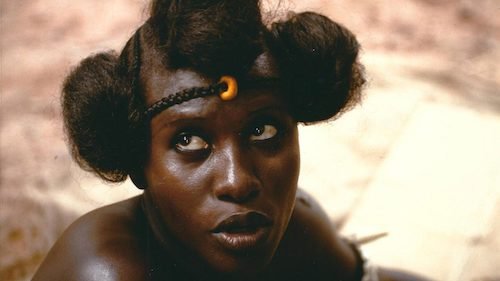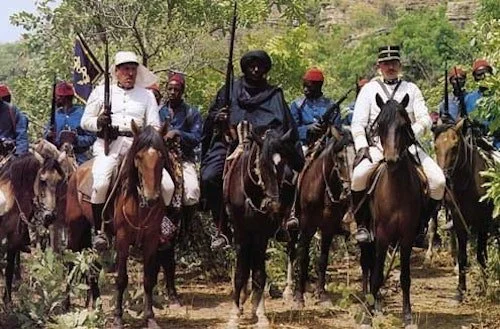The World of Movies: Sarraounia
Written by Rachael Crawley
The World of Movies is a series that explores global cinema, drawing on films from many countries, industries and eras. This week, we look at a historical epic from Burkina Faso.
Sarraounia.
May contain spoilers.
Content warning: This film can be quite violent, in scenes related to war and colonial atrocity.
Sarraounia (Med Hondo, 1986) tells the real-life story of the Battle of Lougou, which occurred in 1899 in present-day Niger. Sarraounia Mangou (chief of the Azna people) led defence efforts against French colonial forces, and effectively held them off for a long period of time. The movie was adapted from a novelization of the events, achieved great success at the time of its release, and has since been hailed as a landmark.
This film is certainly epic in scale, and many of its largest moments are its most skillfully handled. Hondo keeps the pace running smoothly. Actions within a scene (such as fights or dances) are choreographed perfectly, and these sequences can be quite gripping. Even at two hours, the movie does not lag. The film’s sweeping style is helped by the music - mostly traditional pieces (with a hint of jazz?) - which are carefully crafted to match the scene and beautiful to listen to.
That said, the quieter moments are also compelling, and maintain much of the same adroit style. There are plenty of scenes of military planning, which both provide additional information and set up the movie quite ably. The film gives a great deal of time, not just to the Azna and the French military, but to surrounding leaders and groups in the area, which really gives a realistic amount of detail – including a wealth of cultural context. Perhaps in some scenes, the screenplay leans a little too heavily on not-so-subtle exposition, but these moments are short and don’t really detract.
Sarraounia.
The copy I saw was not of great quality, but the scenes are well-staged and the image is clear. Contrasting colours are used particularly well, as are shadows. Every element of this film’s production design is quite strong. The acting, too, is accomplished. In a very large cast, all the performances hold up well, even down to the extras. Aï Keïta captures the complexity of her character, bringing confidence where it was needed, but leaving room for Sarraounia’s fears and doubts. She is a highly skilled warrior and leader, but she is fully realized, not simply an action hero. Curiously, she is not a huge presence for much of the movie’s first half – but she is always felt, even when not physically on screen.
As the film grows to its climactic battle, the tension is convincingly built, and it turns into some brilliantly filmed war sequences. These scenes, like many in this film, are brutal, and viewers should be aware of this going in. However, they drive home their point. The film keeps track of several storylines, and juggles multiple complex themes, without ever neglecting its central focus.
This multifaceted approach really benefits Sarraounia, allowing it to examine one event on several different levels. Paired with its generally strong filmmaking, it creates a rich viewing experience. Impressive in quality and highly informative, it is simply unforgettable.
Rachael Crawley holds a Master's Degree in Film and Photography Preservation and Collections Management from X University (formerly known as Ryerson), and has worked with film in Canada and in Europe. She adores language and cinema, and how these subjects interact with each other.




